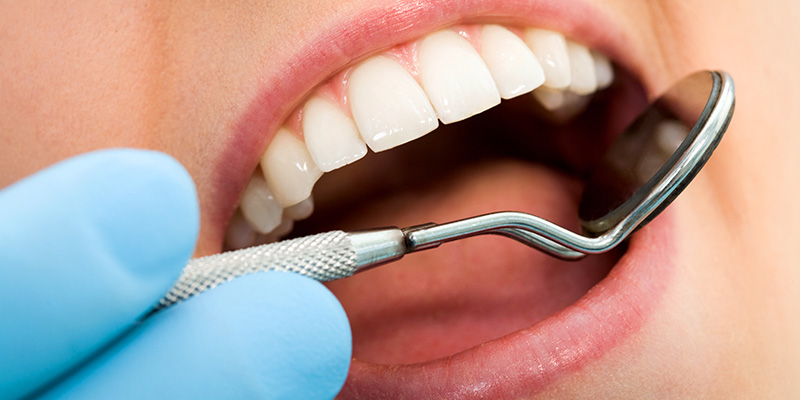Wisdom Tooth Extraction

Wisdom Tooth Extraction
As known by many, the last teeth to erupt are third molar teeth. They begin erupting between ages 17 to 25. It is debatable whether to keep or extract these teeth. If erupted in correct position, they are harmless unless they damage the surrounding tissue. Tooth at an abnormal position on the jaw may be scheduled for extraction considering possible damage in the future. In cases with lack of space, the eruption remains incomplete due to teeth getting stuck between the gingiva-jawbone and the adjacent tooth, thus becoming completely or half-buried inside the jawbone.
Decay: Bacteria accumulates in the cavity of the newly erupting teeth, consequently becoming a threat for the adjacent molar and the wisdom tooth. It is difficult to realize and treat this type of decay. A harsh outcome may occur involving pain, infection and abcess formation.
Pericoronitis (inflammation of half-buried tooth): An infection site manifests at the accumulation site of bacteria and food particles on the gingiva of a partially erupted third molar. This condition causes malodor, pain, oedema and trismus (locked jaw). The infection may spread onto the cheek and neck via lymph nodes. This surface is prone to becoming infected easily.
Pressure Pain: During eruption, pain may be experienced due to pressure compression on adjacent teeth. On several situations this pressure may lead to erosion.
Orthodontic Causes: Many individuals seek orthodontic treatment in order to fix malformations on their teeth. Due to the eruption pressure reflecting on other teeth, condition of crowding may become worse.
Prosthesis-related Issues: Third molars are need to be considered when planning for prosthesis. Because, a prosthesis replacement may be needed according to the changing structure of the mouth after third molar extraction.
Cysts: Cystic cases caused by buried teeth are observed. Cyst causes bone loss, jaw widening and relocation or harm of adjacent teeth. The tooth must be extracted in order to prevent bone loss and cyst must be removed. Cysts rarely morph into tumors and reach dimensions big enough to cause fractures on the jawbone.
Why Does a Badly Positioned Third Molar Have to be Extracted?
- Third molars are on hard-to-reach areas with brushes or floss. Bacteria, acid and food particles causing decay easily accumulate on this area. If the tooth decays and isn't restored with filling, the tooth will be inflamed over time.
- Because of the difficulty in maintaining a proper hygiene of these teeth, bacteria and food particles may cause malodor.
- Horizontally buried tooth under the gingiva may apply pressure which can result in relocation of other teeth and crowding.
- Bacteria accumulating under the gingiva of buried teeth may cause infections.
When Is The Best Time for Third Molar Extraction?
Genç yaşlardaki operasyonlar teknik olarak daha kolaydır ve iyileşme daha çabuk olur. 40 yaşın üstünde operasyonlar epey zorlaşır. Ayrıca, yaşın artmasıyla birlikte yan etkiler de artar ve iyileşme dönemi uzar.
Can Teeth Be Extracted On Cases With Acute-Active Infections (Acute Pericoronitis)?
Generally, no. If the procedure is performed when there is an infection, it can spread to the environment and may cause a delay in healing. The infection is controlled with the help of mouthwash and antibiotics. It is recommended to extract the teeth after the condition becomes chronic.
Is It Different from Other Types of Teeth Extraction?
The difficulty of the procedure changes according to the position, size and shape of the third molar. After a simple extraction, there may be mild swelling, pain and bleeding. Various complex extraction methods requiring special processes may also be applied. The precautions and recommendations from your dental professional will minimize the side effects.
Following the extraction, a healing disorder called dry socket may occur. Blood won't accumulate in the extraction site and pain may be experienced. The symptoms subside in a few days. Additionally, if the patient follows the dental professional's instructions, the risk of dry socket dramatically decreases.
Bone structure becomes more dense and flexibility is reduced with old age. Consequently, extraction procedures are more difficult and healing periods may be longer.
Post-Operative Care Instructions
- Wound area should not be irritated. Otherwise, pain, infection and bleeding may occur.
- Avoid chewing with the extraction site for the first 24 hours.
- Avoid smoking for at least 24 hours. Because tobacco increases the amount of bleeding and interferes with the healing process.
- Avoid spitting. Otherwise, the amount of bleeding will increase and clot may change position.
- Bleeding should be checked for stitches. If there are no stitches, sterile gause should be applied as tampone. Gause should be kept in mouth about 30 minutes for clot formation. If the bleeding continues after gause is removed, a new one should be applied.
- After the procedure, circulation on the area is slowed in order to control the amount of swelling by applying cold compression. The procedure should be as follows: cold tampone application for 20 minutes - 10 minute rest - cold tampone again for 10 minutes.
- After the first 24 hours, it is beneficial to gargle with warm salt water every 2 hours. The mixture can be prepared by adding half spoonful of salt to a glass of warm water.If necessary, your dentist may recommend mouthwash as well. People with high blood pressure should be careful about salty water.
